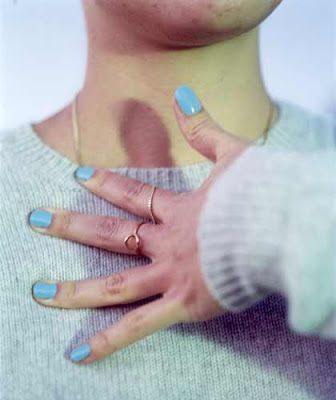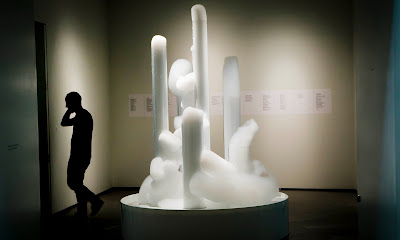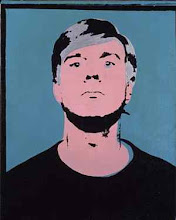 |
| Helen Marten, Turner Prize 2016 installation |
There are no less than 4 major art prizes
currently showing in the UK.
The best known of these is the Turner Prize (first
awarded in 1984), though the oldest is the John Moores Painting Prize which has
been running since 1957; new kid on the block is the The Hepworth Prize for Sculpture - the inaugural exhibition opened 21 October 2016. But, arguably, the
‘biggest’ prize (both in terms of the cash awarded (£40,000) and the only one
with a truly international perspective) is Artes Mundi in Cardiff – yet it
seems to be the one which receives least attention.
The artists shortlisted for the Turner,
Hepworth and Artes Mundi are listed below; for an overview of the John
Moores, see earlier blog entry here. One artist – Helen Marten – is nominated
for 2 prizes: the Turner and the Hepworth.
The
Turner Prize 2016, Tate Britain (until 2 January 2017). Shortlisted
artist: Michael
Dean, Anthea
Hamilton, Helen
Marten, (also shortlisted for the Hepworth, see below) Josephine
Pryde
Read reviews by Adrian Searle, Laura Cumming, Louisa Buck; see short videos on each of the artists here.
NB texts below are from the Tate website.
"Michael Dean starts his work with writing -
which he then gives physical form. He creates moulds and casts of his
words, abstracting and distorting them into an alphabet of human-scale
shapes, using materials that are instantly recognisable from everyday life
such as concrete, steel, soil, sand and corrugated sheet metal.
Dean’s sculptures aren’t intended to be read
as recognisable words, but he does want us to see an element of
language in their forms – to be able to imagine a word or idea. Parts of
his sculptures often resemble the human body: tongues, limbs, eyes,
and casts of his family’s fists appear among the forms – directly
referring to our bodies as we move through the gallery and around his works.
The work (United Kingdom poverty line for
two adults and two children: twenty thousand four hundred and thirty
six pounds sterling as published on 1st September 2016) consists of
£20,436 in pennies. This is the amount of money the government
states is the minimum that two adults and two children need to
survive for a year in the UK. When installing the work, Dean removed one
coin, meaning that now the money you see before you is one penny less than
the poverty line."
Anthea Hamilton
Anthea Hamilton
 |
| Anthea Hamilton, Turner Prize 2016 installation |
 |
| Anthea Hamilton, Project for Door (After Gaetano Pesce), 2015 - Turner Prize 2016 installation |
"Research is at the heart of Anthea Hamilton’s
work, whether it is into art nouveau design, the roots of 1970’s
disco or lichen. Each subject is studied closely and used as a lens
through which to view the world. Hamilton talks of being strongly
influenced by the early 20th century French writer and
dramatist Antonin Artaud and his call for the ‘physical knowledge of
images’. It is this bodily response to an idea or an image that she wants
us to experience when we encounter her work and its use of
unexpected materials, scale and humour.
For the Turner Prize Hamilton re-stages the
exhibition for which she was nominated at New York’s Sculpture Center,
with wallpaper ‘bricks’ covering the walls. She has also made new works
specifically for Tate including a floor to ceiling mural of the
London sky at 3pm on a sunny day in June.
Project for a Door (After Gaetano Pesce) is a
large backside (or ‘butt’) inspired by a photograph showing a model
by Italian designer Gaetano Pesce. Originally intended as a doorway into a
New York apartment block, the work was never realised. Project for a
Door is part of a series by Hamilton of larger than
life-size remakes, physical realisations of images taken
from her archive."
Helen
Marten
 |
| Helen Marten, Limpet Apology (traffic tenses), 2015 |
 |
| Helen Marten, work included in Turner Prize 2016 installation |
"Helen Marten uses sculpture, screen printing
and her own writing to produce installations that are full of references,
from the contemporary to the historical, and the everyday to the
enigmatic. For the Turner Prize she brings together a range of handmade
and found objects drawn from daily life and more unusual sources
(including cotton buds, coins, shoe soles, limes, marbles, eggs, snooker
chalk and snakeskin). Her collage-like gatherings of objects and images
have a playful intent, creating poetic visual puzzles that seem to
invite us into a game or riddle.
Marten’s exhibition space is divided into three
sections. Each suggests a workstation or terminal where some unknown
human activity has been interrupted. When we encounter her installations,
it is as if Marten asks us to become archaeologists of our own times,
and to consider familiar items as if we are seeing them for the first
time. In the process, these objects may become strange and abstract -
‘husked down’, Marten says, ‘to geometric memories of themselves’, that
can be remodelled to give rise to new and unexpected stories or ideas.
Marten encourages us to look very closely at
the items she makes and the materials she uses, and to reconsider the
images and objects we surround ourselves with in the modern world."
"Josephine Pryde uses
photography and sculpture to explore the nature of image making and
display. For the Turner Prize she has created new works
using domestic kitchen worktops. To make these pieces, Pryde placed
objects on the back of the worktops and then exposed them to sunlight in
London, Athens and Berlin. The resulting marks are reminiscent of
photograms, a cameraless photographic technique developed by
early photographers but often associated with experimental 20th
century photography. The works were made over the summer of 2016 and mark
the time between the artist’s nomination for the Turner Prize and the opening of
this exhibition.
The New Media Express in a Temporary
Siding (Baby Wants To Ride) is a scale model of a Class 66 diesel
locomotive and carriages in DB Schenker livery. The carriages are tagged
by graffiti artists from the cities in which the train has previously been
exhibited. For its presentation here at Tate Britain, the train, as
the adapted title of the piece suggests, is temporarily
static, elevated on a platform and awaiting its next move.
Pryde’s ongoing series of photographs, Hands
“Für Mich”, resemble fashion or advertising images. They are
closely cropped and focus on the models’ upper body and hands, which are
touching objects such as phones, computer tablets, driftwood and
notebooks. Our attention is drawn to the point at which the body
and the object meet and to the gestures the hands perform."
The Hepworth Prize for
Sculpture, Hepworth, Wakefield (until 19 February 2017). Shortlisted
artists: Phyllida Barlow, Steven Claydon, Helen Marten, David Medalla
Texts taken from the Hepworth website. Click on
names to link to short videos about the artists.)
"Barlow creates large-scale works that are often
made from inexpensive material, like cardboard, plywood and polystyrene,
crudely painted in industrial or synthetic colours."
Steven Claydon
"Claydon’s work is proof, if any were needed,
that opposites attract. Often playful, always thought-provoking, his pieces are
fusions of old and new and raw and man-made.
 |
| Steven Claydon, Hepworth Prize installation |
'I always try to make something that then gets
up and walks off. Once that collaboration has taken place, between the material
and the idea, then it just kind of charges off. Sometimes I don’t even
recognise the things that I’ve made.'"
"Marten’s work is impossible to pigeonhole. In
between exhibitions she has what she calls ‘hibernation periods’ where she goes
through hundreds of notebooks of scribbles and writing in search of
inspiration. To date, her creative output includes sculptures that mix original
and found objects, videos, text, and screen-printed paintings in a super-flat
cartoon style.
'In a world collapsing under the pressure of a
billions of personal interfaces, it is exciting to celebrate our relationship
to physical touch.'”
"His work ranges from sculpture and kinetic art to
painting, installation and performance art and he draws inspiration from his
various travels and the people he meets along the way.
'I think artists are really constructors of
images and metaphors, and rarely could one be so arrogant as to say, ‘Look I’m
going to change the world and discover DNA’.'”
Artes
Mundi 7, National Museum Cardiff and Chapter, Cardiff (until 26
February 2017). Shortlisted artists: John Akomfrah, Neïl Beloufa, Amy
Franceschini / Futurefarmers, Lamia Joreige, Nástio Mosquito, Bedwyr Williams
Read a review by Adrian Searle.
NB texts are taken from the Artes Mundi website
"Ghanian born John Akomfrah is a seminal figure
in Black British Cinema and forerunner in digital cinematography. He has a body
of work that is considered one of the most distinctive and innovative in
contemporary Britain.
For 30 years the artist, director, writer and
theorist has been highlighting the legacy of African diaspora in Europe by
creating films that explore marginalised histories of European society.
Akomfrah was a founding member of the Black Audio Film Collective and he is
well-known for films including The
Nine Muses (2010), Speak
Like a Child (1998) and The
Stuart Hall Project (2013)."
"Award winning French-Algerian artist Neïl
Beloufa’s uses video and multimedia to explore and parody social interaction
through subjects as diverse as extra-terrestrials, nationalism and terrorism.
Beloufa’s sculptures, assemblages, videos and
installations use displaced, condensed or fictional images. These works exist
in a world that parallels our own and delights in it, where the incidental
surfaces as the subject, and where these subjects are as likely to meet as two
submarines or two satellites. His moving image works look at social interaction
and conversation. Set in often mundane or ambiguous settings his characters
play out scripted events that reveal subtle consequences and intimate gestures."
"Futurefarmers is a group of art and farming
practitioners founded in 1995 by California-based artist Amy Franceschini.
A consistent line through Franceschini’s work reveals sustained
questioning about how “nature” and “culture” are perceived. She uses various
modes to uncover histories and currents related to this divide by challenging
systems of exchange and tools used to “hunt” and “gather.” Her work manifests
as temporary public art, museum exhibitions, publications, bus tours, public
programs and most recently permanent public art.
Futurefarmers work towards creating a
diverse programme of public commissions, exhibitions and publications, which
explore and challenge systems of public transportation, rural farming networks
and food policies."
"Lamia Joreige is a Lebanese artist and
filmmaker who uses archival documents to reflect on the relationship between
‘individual’ and ‘collective’ memory. Her work explores the trauma of the
Lebanese wars with emphasis on her home city, Beirut. In 2011, Joreige’s work Objects of War, a series of
video testimonials on The Lebanese Civil War,
was the first major piece of Lebanese art to be acquired by Tate Modern."
Read an interview in Studio International.
"Nástio Mosquito is a multimedia, performance
and spoken word artist who often places himself centre stage in his work, using
mimicry to explore global and African politics. He often assumes roles,through
mimicry, in order to express ideas occurring to him, not so much as his own
cherished beliefs but rather observations on human folly manifested in modern
life. The distance between his actual identity and such characterisations
enables him to express himself variously as being transgressive, cool, cynical,
profane and vulgar. He is particularly well known for works that refer to the Angolan
Civil War, as well as sexual politics, consumerism and other symptoms of
globalization."
"Bedwyr Williams uses multimedia, performance
and text to explore the friction between ‘the deadly serious’ and ‘the banal’
aspects of modern life. Williams is known for satirizing the relationship
between the artist and curator by creating absurd scenarios for them to appear
in. More recently he has explored, through video, themes of dystopia and
mankind’s significance in the universe.
Video, in recent years, has become of
particular interest after a decade working with spoken word performance. This
new film work mixes media and involves collaboration using humour and bathos to
explore issues and subjects including, our insignificance in the universe (The Starry Messenger, 2013)
a hoarding dystopian future (ECHT,
2014) and buildings with odd angles (Hotel 70º, 2015).
His most recent work ,Century Egg, 2015, made
during a residency with the Museums of Cambridge University, ponders the idea
of preserving objects and the moment when ‘things’ become archived ‘things’."
Read a review of his recent Barbican exhibition in Studio International, and watch a video interview.
Footnote
Another artist – Hito Steyerl - was included on
the original shortlist but has since withdrawn. This is a pity because, according
to the recently published Arts Review Power 100, 2016 Hito Steyerl appears to
be just about the hottest artist working today. (obviously, the list is to be
taken with a generous pinch if salt but on a list dominated by gallerists and
museium directors Hito Steyerl is at no.7 the highest placed of the 25 or so
named artists,. According to Artes Mundi webpage announcing her withdrawal they are discussing working with Hito on another
project in the not too distant future. Something to
look forward to.
 |
| Hito Steyerl, How Not to Be Seen - watch extract here |
John Moores 2016,
Walker Art Gallery 2016 (until 27 November 2016). Winner, 2016: Michael Simpson
(See earlier blog entry, here.)
























